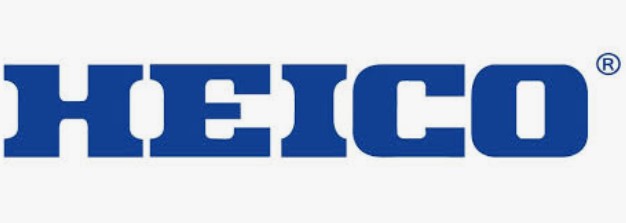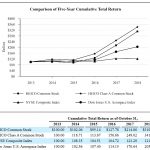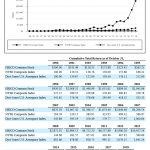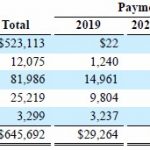Contents
HEICO Corporation (HEI) is overshadowed by larger players in the aerospace industry. It has, however, consistently generated impressive operating metrics and plenty of cash flow.
A key component of HEI's growth strategy is the acquisition of companies (~71 since 1990) in niche segments of the aviation, defense, space, medical, telecommunications and electronics industries in which HEI operates. Target acquisitions are typically those in which HEI can broaden its product offerings, services and technologies while expanding its customer base and geographic presence.
Summary
- Market outperformer for years.
- Overshadowed by larger players in the aerospace industry.
- Impressive operating metrics and plenty of cash flow.
- Growth over the years includes well-executed M&A.
- Currently richly valued but I am prepared to initiate a small position in the Class A shares following ~13.8% pullback from recent 52 week high despite improved guidance.
NOTE: HEI has two classes of common stock that are virtually identical in all economic respects except voting rights. Each share of Common Stock is entitled to one vote per share. Each share of Class A Common Stock is entitled to a 1/10 vote per share. Holders of the Company’s common stock are entitled to receive dividends and other distributions payable in cash, property, stock or otherwise, when and if declared by the Board of Directors.
I am writing this article on the basis of the Class A shares since it is highly improbable anyone reading this article will hold a sufficient number of shares to impact any vote on the future of the company.
Introduction
HEICO Corporation (HEI-a) likely does not cross the radar screen of many investors. In fact, I have never looked into this company as I shy away from smaller companies (annual revenue of ~ ~$1.132B in FY2014 and ~$1.778B in FY2018). Had I not recently stumbled across this Forbes article, HEI might still not be a company in which I would have contemplated initiating a position.
During the initial stage of my analysis, I came across the following graphs found in the 2018 10-K. My interest was piqued!
Source: HEI – 2018 10K
Business Overview
HEI through its subsidiaries is one of the world’s largest manufacturer of Federal Aviation Administration (“FAA”) approved jet engine and aircraft component replacement parts….other than the original equipment manufacturers (“OEMs”) and their subcontractors.
HEI has indicated it is of the opinion it is a leading manufacturer of various types of electronic equipment for the aviation, defense, space, medical, telecommunications and electronics industries.
It has continuously operated in the aerospace industry for over 60 years. Current management, however, assumed control in 1990. Subsequent to being under new management HEI has significantly increased sales and profits through a broadened line of product offerings, an expanded customer base, increased research and development expenditures and the completion of a number of acquisitions.
HEI has supplemented its organic growth with ~71 acquisitions since 1990. These acquisitions have been in niche segments of the aviation, defense, space, medical, telecommunications and electronics industries in which HEI operates. Target acquisitions are typically those in which HEI can broaden its product offerings, services and technologies while expanding its customer base and geographic presence.
Through internal growth and acquisitions, net sales from continuing operations have grown from $26.2 million in FY1990 to $1,777.7 million in FY2018; this represents a compound annual growth rate of ~16%. During the same period, HEI improved net income from $2.0 million to $259.2 million; this represents a compound annual growth rate of ~19%.
HEI is comprised of The Flight Support Group (‘FSG’) and The Electronic Technologies Group (‘ETG’) operating segments.
FSG
This operating segment consists of HEICO Aerospace Holdings Corp. and HEICO Flight Support Corp. and their collective subsidiaries. FSG accounted for ~62%, ~63% and ~64% of net sales in FY2018, 2017 and 2016, respectively.
FSG uses proprietary technology to design and manufacture jet engine and aircraft component replacement parts for sale at lower prices than those manufactured by OEMs. These parts are approved by the FAA and are the functional equivalent of parts sold by OEMs.
FSG also repairs, overhauls and distributes jet engine and aircraft components, avionics and instruments for domestic and foreign commercial air carriers and aircraft repair companies as well as military and business aircraft operators; and manufactures thermal insulation products, complex composite assemblies and other component parts primarily for aerospace, defense, industrial and commercial applications
ETG
ETG consists of HEICO Electronic Technologies Corp. and its subsidiaries. ETG accounted for ~38%, ~37% and ~36% of net sales in FY2018, 2017 and 2016, respectively.
ETG derived ~65%, ~64% and ~65% of its net sales in FY2018, 2017 and 2016, respectively, from the sale of products and services to United States ("U.S.") and foreign military agencies, prime defense contractors and both commercial and defense satellite and spacecraft manufacturers.
Competition
The aerospace product and service industry is intensely competitive and include much larger competitors which have substantially greater name recognition, inventories, complementary product and service offerings, financial, marketing and other resources. In addition, smaller competitors may be in a position to offer more attractive pricing as a result of lower labor costs and other factors.
Further details can be found in HEI’s most recent 10-K for which a link is provided above.
Risk Factors
Far too often investors neglect to look at a company’s potential risk factors. I highly encourage you to review this section of a company’s 10-K which is typically found immediately following a description of the business.
Looking at the risks found in the most recent 10-K for which I have previously provided a link, I am prepared to accept the risks presented and their respective probability of occurrence.
Q3 and YTD2019 Results
On August 27th, HEI reported Q3 and YTD2019 results; details can be accessed here.
On the Q3 earnings conference call management indicated that business conditions and the end markets served by HEI continue to be strong. On the Q2 call with analysts, management indicated that it had never seen business conditions stronger and this strength has continued through to Q3. In fact, HEI’s end markets consisting principally of commercial aerospace, defense, and space, remain very healthy and continue to provide broad growth opportunities to generate shareholder value.
Consolidated net income per diluted share increased ~20% to $0.59 in Q3 2019 which was up from $0.49 in Q3 2018. Diluted EPS increased ~25.7% to a record $1.76 in the first nine months of FY2019, up from $1.40 in the first nine months of FY2018.
HEI continues to invest ~3% of each sales dollar into new product development at both operating segments. Management has indicated that these R&D expenditures are critical to HEI’s future and provide significant returns so there are no plans to reduce these expenditures.
FY2019 Guidance
On the August 28th call with analysts, management indicated it expects YoY net sales growth to be ~14% - 15% and net income growth to be 23% - 24%, up from prior growth estimate in net sales of 12% - 13% and net income of 17% - 18%.
Consolidated operating margin is now expected to be ~22% which is at the high-end of the prior estimate of 21.5% - 22%.
Cash flow from operations is now expected to approximate $405 million, up from the prior estimate of $380 million.
CapEx is expected to approximate $31 million which is a reduction from the prior estimate of $38 million.
Full year operating margin for the FSG operating segment is now expected to be ~19.5% - 20.0% which is an increase from the previous ~19.0% - 19.5%. This operating segment’s full year organic net sales growth rate is now expected to be in the low double digits, up from the prior estimate of the high single digits; these estimates exclude additional acquired businesses.
The ETG operating segment now expects full year net sales growth of ~18% - 19% over FY2018, up from the previous 15% - 17% estimate. Full year operating margin is now expected to be ~29% versus the prior estimate of 29% - 29.5%. Further, organic net sales growth rate is expected to be in the low double digits, up from the prior estimate of high single digits; these estimates exclude additional acquired businesses.
As at the time of the Q3 call with analysts, HEI had not yet completed its budgeting forecast and process for FY2020.
Credit Ratings
Even though HEI is not rated by any of the ratings agencies I am still interested in the degree of leverage employed.
Looking at Q3 2019 results we see that total debt to shareholders’ equity was ~39% compared to ~35.4% as of October 31, 2018. Net debt (total debt less cash and equivalents) of $581.1 million to shareholders’ equity was ~35.4% as of July 31, 2019 compared to ~31.5% as of October 31, 2018.
HEI’s net-debt-to-EBITDA ratio is 1.11 times as of July 31, 2019 compared to 1.04 as of October 31, 2018.
Despite the slight increases, leverage levels are low and management has indicated it expects to keep levels low going forward.
There are no significant debt maturities until FY2023 and the plan is to utilize HEI’s financial strength and flexibility to continue to aggressively pursue high-quality acquisition opportunities, to accelerate growth, and maximize shareholder returns.
The following table summarizes HEI’s contractual obligations as of October 31, 2018 (in thousands):
There have not been any material changes to the amounts presented in the above table of contractual obligations that was included in HEI’s FY2018 10-K (FYE October 31, 2018).
Liquidity/Free Cash Flow (FCF)
I pay particularly close attention to this area when analyzing a company.
In the case of HEI, its financial position and forecasted cash flow remain extremely strong. Cash flow provided by operating activities was $313.4 million in the first 9 months of FY2019. Cash flow provided by operating activities increased ~21% to $135.1 million in Q3 2019, an increase from $111.4 million in Q3 2018; record cash flows from operations in FY2019 continue to be forecast.
HEI’s current ratio (current assets/current liabilities) improved to 3 times as of July 31, 2019, an increase from 2.6 times as of October 31, 2018.
Days sales outstanding of receivables was constant at 45 days as of July 31, 2019 and was comparable to the July 31, 2018 level. HEI continues to closely monitor receivable collection efforts to limit credit exposure which explains why HEI’s credit losses from accounts receivable are minimal.
Not one customer accounted for more than 10% of net sales and HEI’s top 5 customers represented ~21% of consolidated net sales in both Q3 2019 and 2018.
Inventory turnover of 125 days for the period ended July 31, 2019 was comparable to the turnover rate in the period ending July 31, 2018.
Investors who focus heavily on dividend income which can be generated from their investments will likely ‘PASS’ on investing in HEI. HEI does not devote a page on its website related to its dividend and when you look at this external site, you can see that dividend payments to shareholders is not a priority; I do not envision HEI’s dividend yield will remotely approach 0.5%!
In addition, HEI distributes a dividend semi-annually and NOT quarterly. In fact, in July 2019, HEI distributed its regular semi-annual $0.07/share cash dividend; this was its 82nd consecutive semi-annual cash dividend.
Although dividend growth is remote, investors can reasonably expect stock splits. In June 2018, December 2017 and March 2017, HEI’s Board of Directors declared a 5-for-4 stock split on both classes of common stock. The stock splits were effected as of June 28, 2018, January 18, 2018 and April 19, 2017, respectively, in the form of a 25% stock dividend distributed to shareholders of record as of June 21, 2018, January 3, 2018 and April 7, 2017, respectively.
Stock splits, however, do not increase wealth but merely reduce the share price at which investors can acquire shares.
In 1990, HEI’s Board of Directors authorized a share repurchase program, which allows the repurchase of HEI common stock in the open market or in privately negotiated transactions at HEI’s discretion, subject to certain restrictions included in HEI’s revolving credit agreement.
As of October 31, 2018, the maximum number of shares that may yet be purchased under this program was 4,886,353 of either or both of the Class A Common Stock and the Common Stock. The repurchase program does not have a fixed termination date. During FY2018, 2017 and 2016, HEI did not repurchase any shares of common stock under this program.
Valuation
As at the end of Q3 2019, HEI has generated $1.76 in diluted EPS versus $1.40 for the first 3 quarters of FY2018; on an adjusted basis HEI has generated YTD EPS of $1.77.
Adjusted EPS guidance for FY2019 is $2.33 and $2.59 for FY2020 from 11 and 12 brokers, respectively.
Using the current $98.02 share price for the Class A shares as at September 13, 2019, we get a forward adjusted PE of 42.06.
This is by no means an inexpensive stock! Looking at the bright side, however, HEI recently hit a 52 week high of $133.69 at which time the forward adjusted PE was 57.38! OUCH!
Final Thoughts
In my opinion, HEI is a compounding and cash flow generating company and the fact its dividend is negligible is no reason for me not to acquire a position.
I do not dispute that shares are valued in the ‘nosebleed’ range but given HEI’s historical track record and long-term goals and objectives, I intend to initiate a small position in HEI’s Class A shares for one of the ‘Side Accounts’ of the FFJ Portfolio. My intent is to acquire additional shares should the share price pull back further.
I wish you much success on your journey to financial freedom.
Thanks for reading!
Note: I sincerely appreciate the time you took to read this article. Please send any feedback, corrections, or questions to [email protected].
Disclaimer: I have no knowledge of your individual circumstances and am not providing individualized advice or recommendations. I encourage you not to make any investment decision without conducting your own research and due diligence. You should also consult your financial advisor about your specific situation.
Disclosure: I do not hold a position in HEI but intend to initiate a position in the Class A shares within the next 72 hours.
I wrote this article myself and it expresses my own opinions. I am not receiving compensation for it and have no business relationship with any company whose stock is mentioned in this article.





